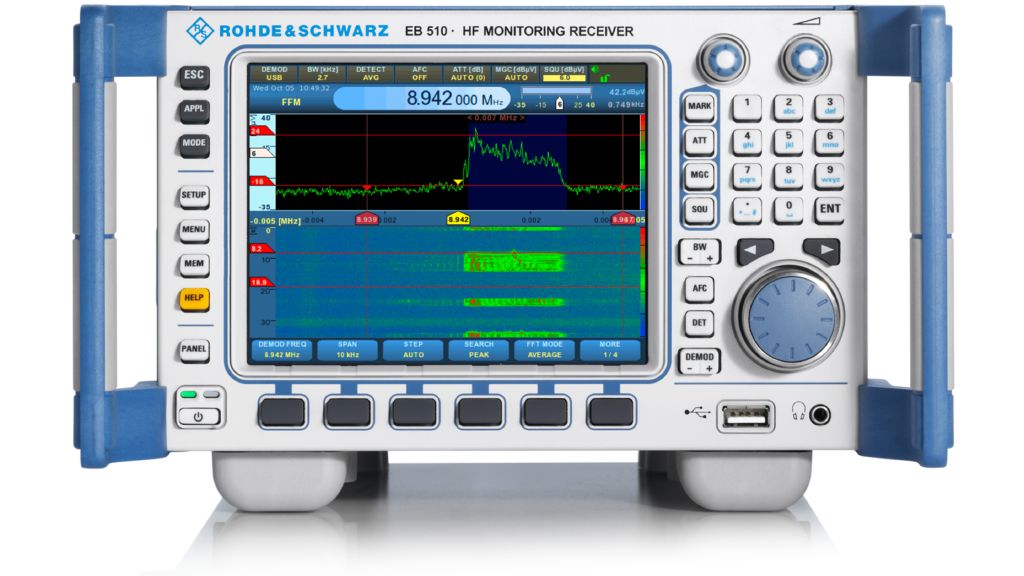Multiple communications monitoring using memory scan
Monitoring on up to 10 000 channels with different parameter settings

Monitoring on up to 10 000 channels with different parameter settings


Maritime communications monitoring is essential to ensure navigation safety and efficient operation of global shipping as well as vessel tracking services. Additionally, guarding the distress frequency is an extremely crucial function at shore stations. Especially for marine communications, these security critical radio services mostly use the high-frequency (HF) band. Most yacht and ship-to-ship communications as well as distress and safety communications are active in this spectrum. Each communications link uses different parameter settings, e.g. channel frequency, demodulation type, demodulation bandwidth and attenuation.
The R&S®EB510 is a user-friendly, versatile HF monitoring receiver with excellent RF parameters that is equipped with various useful functions to aid regulatory authorities, spectrum management personnel and search and rescue operators in their daily monitoring tasks.
For communications such as distress and safety communications, it uses AM demodulation with a bandwidth of 3 kHz. For ship-to-ship communications, it uses SSB (typically USB) demodulation with a bandwidth of around 4 kHz. The R&S®EB510 can be deployed to monitor both of the above types of communications in a single scan, by using the receiver’s memory scan function.
This compact HF monitoring receiver has up to 10 000 programmable memory locations available for the memory scan function. Each memory location can store the desired frequency, description, demodulation setting, attenuation, squelch values, etc. The receiver has a scan speed of up to 1600 channels/s.
During the memory scan, an activated channel is detected when its signal level is above the predefined squelch level. The scan will then pause at that frequency for a specific duration. When the demodulation of the analog communications is correctly set, the content will be audible. The “listen-in” duration is a universal setting known as dwell time. The dwell time can also be coupled with the no-signal time setting to allow the receiver to continue to wait for the return of the signal that disappeared before the dwell time elapsed. During the “listen-in” period, the receiver also displays the relevant setting for that demodulated channel.
With abundant programmable memory locations, fast scan speed, many supported analog demodulation types and three antenna inputs (for directional or omnidirectional, respectively vertically or horizontally polarized antennas), the receiver is capable of performing HF monitoring in widely varying communications scenarios. All these features are available in the base unit.
Distress and safety communications
In this application, per channel AM demodulation with a 3 kHz bandwidth is used. Six typical known frequencies are used: 2182 kHz, 3023 kHz, 4125 kHz, 5680 kHz, 6125 kHz and 8364 kHz.
Ship-to-ship and ship-to-shore communications
In this application, per channel USB demodulation with a 4 kHz bandwidth is used. There is a list of HF frequencies used for marine communications that are internationally agreed by ITU. The polarizations of the antenna depend on the desired communications distance.
Yacht communications
Many yachtsmen use amateur radio as their mode of communications. Specific frequency allocations vary from country to country and between ITU regions as specified in the current ITU HF frequency allocations for amateur radio. LSB, AM and FM are the typical modulation modes.
Weather fax and text weather transmissions
The frequencies used vary from country to country. The transmissions commonly utilize USB or FM modulation. For a black-and-white weather fax transmission, a bandwidth of around 800 Hz is used.

